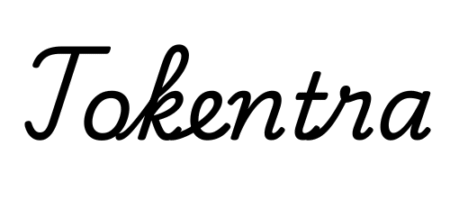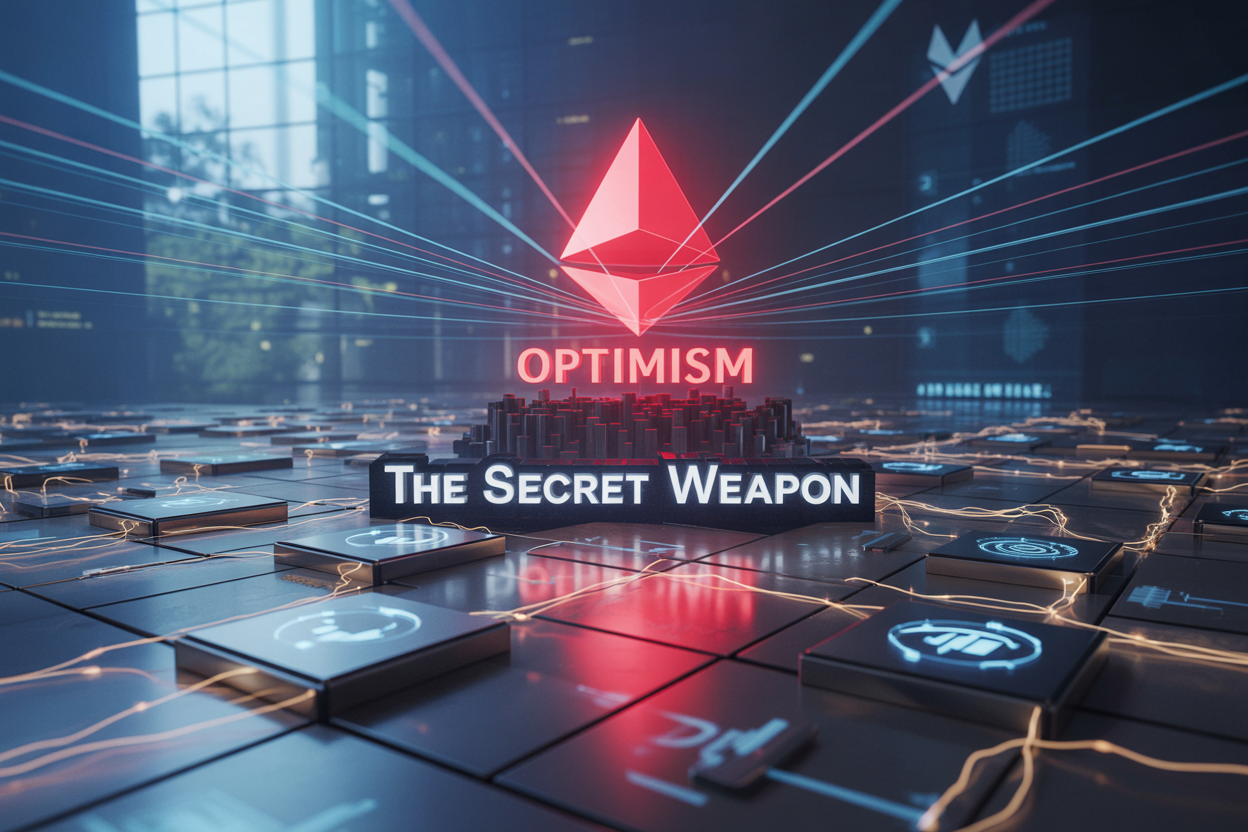Introduction
Blockchain Crypto developers and investors looking for the next big advancement in blockchain technology need to understand interoperability – the ability for different blockchain networks to communicate and share data seamlessly. By 2025, five key networks will transform how blockchains connect and collaborate, creating new opportunities for cross-chain applications. This guide examines how Polkadot’s parachain system is revolutionizing multi-chain frameworks, explores Cosmos’ “Internet of Blockchains” approach, and highlights how Avalanche’s subnet architecture is breaking down barriers between chains. Let’s dive into the blockchain networks making true interoperability possible.
Understanding Blockchain Interoperability in 2025

A. Why interoperability matters for the future of crypto
Blockchain silos are killing crypto’s potential. Plain and simple.
Think about it – what good is owning digital assets if they’re trapped in isolated Crypto networks? That’s the reality we faced before interoperability solutions came along.
In 2025, interoperability isn’t just a nice feature – it’s the backbone of a functional crypto ecosystem. When blockchains can talk to each other, everything changes. Users can move assets between chains without complicated bridge processes. Developers can build apps that leverage the strengths of multiple networks. The market becomes more liquid and efficient.
Remember when you needed different apps, wallets, and exchanges for each blockchain? Those days are disappearing fast. Interoperability means one interface to rule them all – simplifying everything from DeFi to gaming to identity management.
The networks winning in 2025 understand that no single blockchain can dominate. Instead, the future is a web of specialized chains working together seamlessly.
B. Key challenges in cross-chain communication
Cross-chain communication sounds great until you dig into the messy details.
The biggest headache? Security. Each time assets move between chains, they create attack vectors. The infamous bridge hacks of 2022-2023 proved this painfully, with billions lost to exploits.
Speed is another roadblock. Cross-chain transactions often feel like watching paint dry compared to native transfers. Users expect instant finality, but reconciling different consensus mechanisms takes time.
Then there’s the compatibility nightmare. Chains speak different languages – some use UTXO models, others account-based. Some support smart contracts, others don’t. Making these systems talk requires complex translation layers.
Trust assumptions create another puzzle. True decentralization means not relying on centralized validators, but fully trustless bridges remain technically challenging.
Data standardization also trips up developers. Without common formats for assets and transactions, interoperability solutions need custom adapters for each new chain they support.
C. The evolution of interoperability solutions since 2023
The interoperability landscape has transformed dramatically since 2023.
Back then, most cross-chain activity happened through centralized bridges – convenient but vulnerable. The industry learned hard lessons from the $2+ billion lost to bridge hacks.
Fast forward to 2025, and we’ve seen three major evolutionary leaps:
First, the rise of modular interoperability protocols that separate security, messaging, and execution layers. This approach lets developers choose their trust tradeoffs rather than accepting one-size-fits-all solutions.
Second, the standardization of cross-chain messaging formats. Major networks finally agreed on common protocols for inter-blockchain communication, similar to how HTTP standardized web traffic.
Third, the implementation of zero-knowledge proofs for cross-chain verification. These cryptographic innovations dramatically improved security by allowing one chain to verify transactions on another without relying on third-party validators.
D. Economic benefits of seamless cross-chain transactions
The numbers don’t lie – interoperable blockchains create massive economic upside.
Capital efficiency jumps dramatically when assets flow freely between ecosystems. Think about all the locked liquidity sitting idle in different chains. When those pools connect, the same capital can work harder, increasing yields across the board.
Transaction costs plummet too. Competition between chains forces fee optimization, and users can choose the most cost-efficient network for each transaction type.
Market fragmentation fades away. Remember when trading the same asset on different chains meant dealing with significant price differences? That arbitrage opportunity signaled inefficiency. In 2025’s connected ecosystem, prices harmonize quickly across chains.
For developers, interoperability slashes go-to-market time. Build once, deploy everywhere becomes reality when applications can interact across multiple chains without custom integrations for each.
Perhaps most importantly, user adoption accelerates. The complexity barrier that scared away mainstream users disappears when people can use blockchain applications without knowing which chain they’re on.
Polkadot: The Multi-Chain Framework Pioneer

How Polkadot’s Parachain Model Enables Cross-Network Transfers
Polkadot isn’t just another blockchain – it’s a complete rethink of how networks should talk to each other. The secret sauce? Its parachain model.
Parachains are essentially specialized blockchains that plug into Polkadot’s main Relay Chain. Think of them as dedicated lanes on a highway, each handling specific types of traffic without slowing down the others.
The magic happens at the connection points. When you want to move assets from one parachain to another, you’re not dealing with clunky bridges or wrapped tokens. The transfers happen natively, secured by Polkadot’s shared security model.
What makes this work is XCMP (Cross-Chain Message Passing) – Polkadot’s specialized protocol that lets parachains chat with each other directly. No middlemen, no extra fees, just smooth sailing from one chain to the next.
Recent Protocol Upgrades Enhancing Security and Speed
Polkadot has been on fire with upgrades lately. The Asynchronous Backing update was a game-changer, slashing block times from 12 seconds down to just 6. Half the wait time means double the throughput.
Security got beefed up too. The network now runs a fancy coretime market that dynamically allocates resources, making sure nobody can hog the system or create bottlenecks.
The validator set has expanded to 1,000 nodes – way more than most competing networks. More validators = more decentralization = more security. Simple math.
And don’t sleep on their ZK rollup integration. These zero-knowledge proofs are cranking up both privacy and transaction verification speed.
Real-World Applications Leveraging Polkadot’s Interoperability
Polkadot’s cross-chain powers aren’t just theoretical – they’re being put to work right now:
- Acala’s stablecoin ecosystem seamlessly moves liquidity between parachains
- Moonbeam enables Ethereum-compatible dApps to access resources across the entire Polkadot network
- Centrifuge is tokenizing real-world assets like invoices and mortgages, making them tradable across chains
The DeFi space is particularly hot. Cross-chain lending protocols like Parallel Finance are letting users borrow against assets sitting on completely different blockchains – something that was a nightmare before Polkadot.
Ecosystem Growth and Developer Adoption Rates
The numbers tell the story. Polkadot’s developer count has jumped 60% in the past year alone, now hosting over 1,500 active monthly developers.
GitHub contributions have exploded too:
| Metric | 2023 | 2024 | Growth |
|---|---|---|---|
| GitHub commits | 12,450 | 21,780 | +75% |
| Active parachains | 32 | 53 | +65% |
| Grant recipients | 215 | 380 | +77% |
What’s driving this rush? Their Substrate framework is a big part of it. Developers can build custom parachains with pre-built modules, cutting development time by months.
The treasury has also distributed over $25 million to developers through community-governed grants, fueling a virtuous cycle of innovation.
Future Roadmap for Enhanced Cross-Chain Functionality
Polkadot’s just getting started. Their roadmap is packed with ambitious upgrades:
First up is the full implementation of XCMv3 – an enhanced cross-chain messaging protocol that’ll support complex multi-step transactions across parachains.
They’re also rolling out intelligent parachain scaling, where chains can automatically expand capacity during high demand.
The big one? Polkadot’s planned “bridgehub” – a dedicated parachain that’ll standardize connections to external blockchains like Ethereum, Solana, and Bitcoin.
Beyond technology, they’re pushing for regulatory clarity. The Web3 Foundation is actively working with policymakers to create frameworks that recognize Polkadot’s unique multi-chain structure.
All these moves point to Polkadot’s ambition: not just connecting their own ecosystem, but becoming the universal translator for all blockchains.
Cosmos: The Internet of Blockchains

The Inter-Blockchain Communication (IBC) Protocol Explained
Cosmos didn’t just build another blockchain. They created the ultimate blockchain connector. The Inter-Blockchain Communication (IBC) protocol is like the universal translator from sci-fi, but for blockchains.
IBC lets completely different blockchains talk to each other without middlemen. Picture this: you’ve got assets on one chain but want to use a dApp on another. Before IBC, you’d need a bridge (which could get hacked) or a centralized exchange (defeating the whole decentralization thing).
With IBC, your tokens can hop between chains as easily as you switch apps on your phone. The magic happens through a clever system of relayers, light clients, and cryptographic proofs that verify transactions across chains.
What makes IBC special? It doesn’t force chains to change their consensus mechanisms or give up sovereignty. Each blockchain keeps doing its thing while still connecting to the wider ecosystem.
Key Ecosystem Projects Driving Interoperability Innovation
The Cosmos ecosystem is exploding with projects that make cross-chain dreams reality:
- Osmosis: The DEX that’s changing how we think about cross-chain trading. No wrapped tokens or synthetic assets – just pure, direct swaps between IBC-enabled chains.
- Axelar: Taking interoperability beyond just Cosmos chains to connect with Ethereum, Polygon, and other major networks.
- Stride: The liquid staking solution that lets you use staked ATOM across multiple chains, keeping your assets working while you explore dApps elsewhere.
- Keplr Wallet: The multi-chain wallet that makes jumping between IBC-enabled chains feel as natural as scrolling through social media.
These aren’t just isolated projects – they’re creating a seamless web where assets and data flow freely.
Advantages of Cosmos SDK for Building Interoperable Applications
The Cosmos SDK isn’t just another development kit – it’s practically cheating for developers building cross-chain apps.
For starters, it’s modular. Think of it as blockchain Legos where you pick exactly what you need. Need a specific governance model? There’s a module for that. Custom staking mechanisms? Grab that module.
The SDK handles all the boring, complex stuff like networking and consensus, so developers can focus on what makes their app special. And because it’s built with Go, you get performance without sacrificing security.
But the real game-changer? The SDK bakes in IBC compatibility from day one. Your app isn’t just built for one chain – it’s instantly part of a thriving ecosystem.
| Feature | Benefit |
|---|---|
| Modular Architecture | Build only what you need, customize everything else |
| Tendermint Core | Instant finality without the energy waste |
| IBC Built-in | Native cross-chain compatibility |
| Application-Specific Chains | Optimize for your use case, not someone else’s |
Recent Governance Developments Impacting Cross-Chain Capabilities
Cosmos governance isn’t just voting – it’s reshaping how blockchains connect.
The recent Cosmos Hub (ATOM) proposal 82 dramatically expanded the hub’s role in securing the entire ecosystem. With interchain security, smaller chains can now “rent” the Hub’s massive validator set, instantly boosting their security while maintaining independence.
Meanwhile, the ATOM 2.0 economic redesign is transforming ATOM from a simple staking token into the reserve currency of the interchain. The new Interchain Allocator is directing capital to promising new chains and protocols, supercharging cross-chain innovation.
The community also greenlit the Neutron smart contract platform – a CosmWasm-enabled chain that lets developers build cross-chain smart contracts that can interact with any IBC-connected chain.
These governance decisions aren’t just technical updates – they’re fundamentally changing how developers approach building cross-chain applications and reshaping the economics of the entire ecosystem.
Avalanche: Subnets Revolutionizing Cross-Chain Compatibility

How Avalanche’s subnet architecture facilitates interoperability
Avalanche’s subnet architecture isn’t just another blockchain feature – it’s a complete game-changer for cross-chain operations. Think of subnets as specialized mini-blockchains that run within the broader Avalanche ecosystem. Each subnet can have its own rules, validators, and consensus mechanisms while still maintaining a connection to the primary network.
What makes this architecture so powerful? Unlike traditional siloed blockchains that struggle to communicate with each other, Avalanche subnets are designed from the ground up with interoperability in mind. They share the same foundational infrastructure but can be customized for specific use cases.
The magic happens through Avalanche’s three built-in blockchains: X-Chain (for assets), C-Chain (for smart contracts), and P-Chain (for subnet coordination). This trio creates a solid foundation that allows different subnets to speak the same language when they need to interact.
For developers, this means you can build a specialized blockchain for your DeFi protocol, gaming platform, or enterprise solution without sacrificing the ability to connect with other networks. And for users? Seamless asset transfers and experiences across different applications without the typical friction of cross-chain interactions.
Cross-subnet asset transfers and communication protocols
Moving assets between Avalanche subnets feels almost too easy compared to traditional cross-chain bridges. The network’s native Cross-Subnet Communication protocol lets assets and data flow naturally between different subnets without the complex workarounds other ecosystems require.
Here’s how it actually works in practice:
- A user initiates a transfer from Subnet A to Subnet B
- The transaction gets verified on Subnet A
- Avalanche’s consensus mechanism confirms the transaction across validators
- The P-Chain coordinates the handoff between subnets
- Subnet B receives and processes the incoming assets
This isn’t just theory – it’s happening right now with DeFi applications sharing liquidity pools across specialized subnets, gaming assets moving between game-specific blockchains, and enterprise data flowing between private and public networks.
What sets Avalanche apart is how these transfers maintain atomic properties – they either complete fully or don’t happen at all. No more waiting anxiously for cross-chain transfers that might get stuck in limbo.
Enterprise adoption cases leveraging Avalanche’s interoperability
Major enterprises aren’t just experimenting with Avalanche – they’re building production systems on it specifically because of its interoperability strengths.
JPMorgan’s Onyx platform leverages Avalanche subnets to create a controlled environment for tokenized assets while maintaining connections to the broader DeFi ecosystem. This gives them the perfect balance of compliance and innovation.
Deloitte deployed a disaster recovery solution using Avalanche that connects government systems, insurance providers, and relief organizations through specialized subnets – each with appropriate access controls but able to share critical information during emergencies.
Supply chain giants are particularly excited about Avalanche’s architecture. Companies like Mastercard are exploring how interconnected subnets can track products from manufacturer to consumer while letting different stakeholders maintain their own ledgers with varying levels of transparency.
The pattern is clear: enterprises need both isolation and connection. They want custom blockchain environments that don’t turn into yet another silo. Avalanche’s subnet design delivers exactly that.
Performance metrics compared to other interoperability solutions
Raw numbers tell the story better than marketing claims. When we measure Avalanche against other interoperability solutions, the differences become stark:
| Metric | Avalanche | Polkadot | Cosmos | Ethereum L2s |
|---|---|---|---|---|
| Cross-chain TPS | 4,500+ | 1,500 | 2,000 | 2,000-3,000 |
| Finality time | 1-2 seconds | 60 seconds | 6-7 seconds | 10-30 minutes |
| Security model | Subnet-specific | Shared | Independent | Inherited |
| Validator requirements | Flexible | Fixed | Independent | Inherited |
| Cross-chain fee | ~$0.02 | ~$0.10 | ~$0.25 | $5-50 |
Those numbers aren’t just impressive on paper – they translate to real-world advantages. When NFT marketplace Magic Eden expanded to Avalanche, they reported 97% lower cross-chain transaction costs compared to their previous Ethereum bridge solution.
Gaming companies particularly appreciate the sub-second finality when players need to move assets between game environments. And for DeFi applications, the high TPS means cross-subnet liquidity remains efficient even during peak market activity.
Integration with traditional finance systems
Traditional finance isn’t known for rapid technology adoption, but Avalanche’s approach to interoperability is changing that. The network has become a bridge between TradFi and DeFi primarily because its subnet architecture mimics the separation of concerns that financial institutions already understand.
Banks can operate private subnets with permissioned access for sensitive operations while still connecting to public networks for settlement and liquidity. This hybrid approach has attracted financial institutions that previously avoided blockchain entirely.
ANZ Bank’s stablecoin project on Avalanche demonstrates this perfectly. They maintain a private subnet for their regulated financial operations but can seamlessly interact with DeFi protocols when needed. The Australian dollar stablecoin moves between these worlds without the typical barriers.
SWIFT’s experiments with Avalanche for cross-border payments show how the network can connect not just blockchains to each other but also to legacy financial infrastructure. The subnet architecture allows for specialized adapters that translate between blockchain consensus and traditional database systems.
This isn’t just about technology compatibility – it’s about governance compatibility. Avalanche subnets can implement the compliance requirements financial institutions need while still participating in the broader ecosystem.
Emerging Interoperability Solutions Reshaping the Landscape

A. Layer-zero protocols and their impact on seamless transfers
The blockchain world is shifting. Gone are the days of isolated chains. Layer-zero protocols are now the backbone connecting everything.
Think about it – before layer-zero, moving assets between chains was like trying to mail a package to a country with no postal service agreement. Clunky, slow, and often expensive.
Platforms like Axelar, LayerZero, and Hyperlane have changed the game entirely. They’re not just building bridges; they’re creating the foundation for a completely interconnected blockchain universe.
What makes them special? They work beneath the actual blockchains, providing a universal communication layer that any chain can plug into. It’s like they’ve created a universal translator that lets Ethereum, Solana, and Avalanche all speak the same language.
The real magic happens in how they handle consensus. Traditional bridges rely on validators specific to that bridge. Layer-zero protocols distribute this trust across the entire network. Fewer single points of failure means fewer catastrophic bridge hacks.
B. AI-powered cross-chain bridges enhancing security
Remember those billion-dollar bridge hacks from 2021-2023? Yeah, that’s not something anyone wants to repeat.
Enter AI-powered security solutions. These aren’t just marketing buzzwords anymore.
The newest generation of cross-chain bridges use machine learning algorithms to detect suspicious transactions before they happen. They analyze patterns across thousands of previous attacks and flag anything that looks fishy.
Some bridges now implement real-time anomaly detection that can freeze transactions that deviate from normal usage patterns. One bridge might notice you’re suddenly moving 1000x your usual amount to a newly created wallet address and step in before disaster strikes.
What’s really cool is how these systems get smarter over time. Each attempted attack teaches the AI what to look for next. It’s like having a security guard who never sleeps and gets better at their job every day.
C. Regulatory developments affecting interoperability standards
The wild west days of crypto are fading fast. Regulators have entered the chat, and they’re particularly interested in cross-chain activities.
Why? Because interoperability has become a double-edged sword. The same technology that lets legitimate users move assets seamlessly also creates opportunities for money laundering and sanctions evasion.
We’re seeing a push toward standardized reporting for cross-chain transfers above certain thresholds. The FATF’s “Travel Rule” is being adapted specifically for blockchain interoperability.
Some jurisdictions are taking it further. Singapore’s MAS now requires cross-chain bridge operators to implement stronger KYC/AML procedures than single-chain protocols.
The smart players in this space aren’t fighting regulation – they’re getting ahead of it. Projects like Cosmos and Polkadot are developing compliance-focused interoperability modules that can be toggled on for transfers involving regulated entities.
D. Quantum-resistant interoperability solutions on the horizon
The quantum computing threat is no longer theoretical. It’s a when, not if situation.
Most current bridge protocols rely on cryptographic primitives that could be broken by sufficiently powerful quantum computers. That’s a serious problem when you’re securing billions in cross-chain assets.
Forward-thinking interoperability projects are already implementing post-quantum cryptography. Lattice-based and hash-based signature schemes are replacing traditional elliptic curve cryptography in the newest generation of bridges.
Some teams are taking a hybrid approach – using both traditional and quantum-resistant encryption methods simultaneously. This provides backward compatibility while preparing for the quantum future.
The most interesting development might be the quantum-secure MPC protocols for cross-chain consensus. These distribute the signing process across multiple parties in ways that remain secure even against quantum attacks.

The landscape of blockchain interoperability has evolved dramatically by 2025, with Polkadot, Cosmos, and Avalanche leading the charge toward a more connected crypto ecosystem. These pioneering networks have fundamentally transformed how blockchains communicate and share data, breaking down the silos that once restricted the potential of decentralized applications. Through innovations like Polkadot’s parachain model, Cosmos’ Inter-Blockchain Communication protocol, and Avalanche’s subnet architecture, developers and users now experience seamless asset transfers and cross-chain functionality that was merely theoretical just a few years ago.
As we move forward, these interoperability solutions will continue to play a crucial role in blockchain adoption and utility. Whether you’re a developer building the next generation of DApps or an investor looking to position your portfolio for the increasingly interconnected future, understanding these networks provides valuable insight into where the industry is heading. The blockchain world is no longer about competing isolated chains but rather about how these technologies can work together to create a more efficient, accessible, and powerful decentralized ecosystem.




